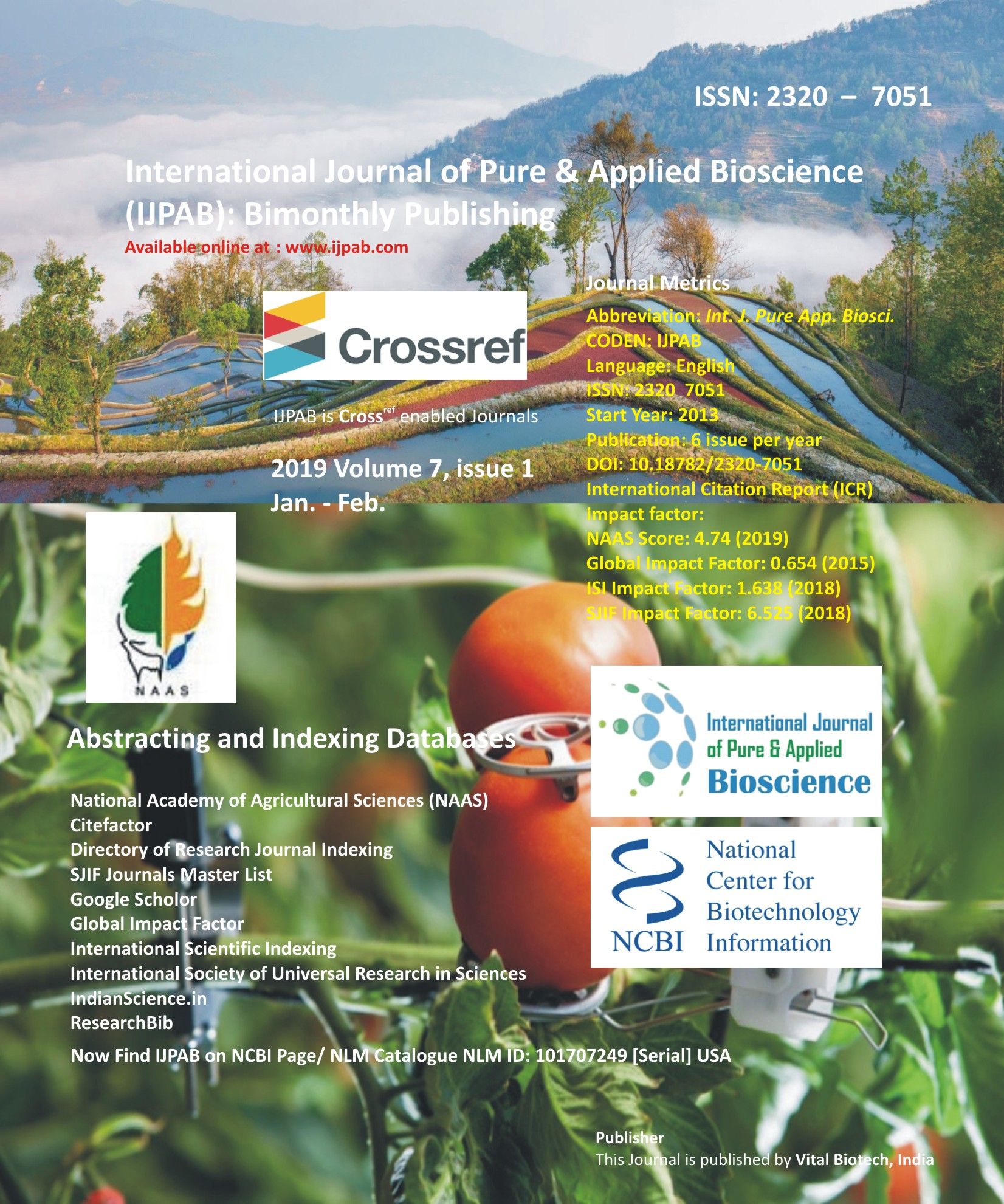
-
No. 772, Basant Vihar, Kota
Rajasthan-324009 India
-
Call Us On
+91 9784677044
-
Mail Us @
editor@ijpab.com
International Journal of Pure & Applied Bioscience (IJPAB)
Year : 2019, Volume : 7, Issue : 1
First page : (92) Last page : (96)
Article doi: : http://dx.doi.org/10.18782/2320-7051.7299
To Study the Socio-Economic Status of Respondents in Relation to Awareness of Rural Development Programmes in Meerut District India
Amit Kumar1*, D. K. Singh2 and Brajendra Pratap Singh3
1CCS Haryana Agricultural University, Hisar-125004 Haryana, India
2&3Department of Agricultural Extension Sardar Vallabhbhai Patel University of
Agriculture and Technology, Meerut-250110, (U.P.) India
*Corresponding Author E-mail: amitkumarmungarwal@gmail.com
Received: 15.12.2018 | Revised: 21.01.2019 | Accepted: 1.02.2019
ABSTRACT
The study was conducted in the District Meerut 2016 to investigate the socio-economic status of respondents for rural development programmes. Meerut district comprise 12 blocks from the selected each villages 16 respondents were selected randomly, thus a total number of respondent were interviewed with the help of pre-structured schedule. As per study mentioned that majority of respondents were found young age group of up to 45 years 55.00 percent, other middle age group 23.75 per cent, old age group 21.25 per cent, Men generally made decisions among the eighty respondents 28.00 per cent were found illiterate while the remaining 27.50 per cent were literate which revealed high degree of illiteracy level, schedule cast (20.00 per cent), other backward cast (70.00 per cent), general cast (10.00 per cent), land holding small farmers 1-2 ha. 62.50 per cent, marginal farmer below 1 ha. 20.00 per cent), land less 7.50 per cent, main occupation 87.5 per cent business and service 9.25 per cent, households material mostly farmer using radio 41.25 per cent, TV 90.00 per cent and furniture 42.5 per cent rest are using others, families size of small up to 4 members 41.25 per cent, medium 5-6 members (33.75 per cent), families type nuclear 53.75 per cent and joint 46.25 per cent, pucca type of housing pattern 83.75 per cent. It was observed that maximum respondent having milch animals 51.25 per cent and also nil (3.75 per cent), draft type of animal below 2 animals 23.75 per cent. The maximum respondents using private electric tub well or diesel tub well 70.00 per cent canal 20.00 per cent and Govt. tub well 10.00 per cent for irrigation purpose. It was also mentioned that majority of respondents using type of machinery bullock cart 88.75 per cent, tractor 35.00 per cent, and no social participation 76.25 per cent.It was found that maximum respondents who had the earning annual income of Rs 30.000-45.000/- is 55.00 Per cent. It was found that maximum number of respondents 31-60 have medium type of socio-economic status 63.75 per cent, low type up to 30 socio-economic status 33.7 per cent and high above 60 have 2.5 per cent.
Key words: Socio-economic status, Rural development, Programmes, Economic, Employment.
Full Text : PDF; Journal doi : http://dx.doi.org/10.18782
Cite this article: Kumar, A., Singh, D.K. and Singh, B.P., To Study the Socio-Economic Status of Respondents in Relation to Awareness of Rural Development Programmes in Meerut District India, Int. J. Pure App. Biosci.7(1): 92-96 (2019). doi: http://dx.doi.org/10.18782/2320-7051.7299

